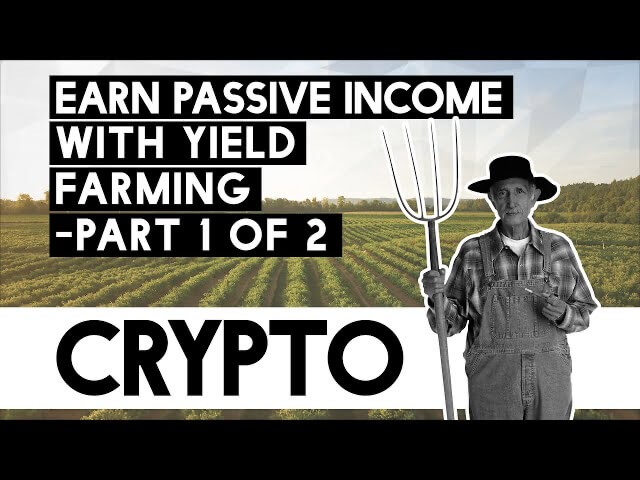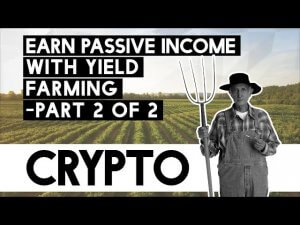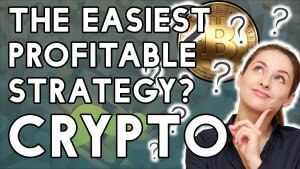Earn Passive Income With Yield Farming – Part 1/2

The hottest buzzword in crypto at the moment is surely “yield farming.” Yield farming allows people to earn fixed or variable interest simply by investing crypto in a DeFi project. As an example, investing in ETH is NOT yield farming, but lending out ETH on the Aave platform for a return IS yield farming. As the newest trend in crypto, investors are still a bit skeptical as they do not understand what it is and how it works.
Yield Farming – Explained

Yield farming is the practice of staking cryptocurrencies in return for monetary gain. While the expectation of earning a yield based on investments is nothing new, the concept of yield farming has arisen directly from the decentralized finance sector. The idea is that individuals can earn tokens in exchange for participating in DeFi applications. Yield farming is often called liquidity mining.
How It All Works
The precise mechanics of yield farming vary based on the terms and features of the individual DeFi application. Most projects started out by offering users a small share of the transaction fees in exchange for contributing liquidity. However, the most common yield farming method at the moment is to use a DeFi application and earn the project token as a reward.

This practice became popular during the summer of 2020 when Compound announced that it would start issuing its COMP governance token to both lenders and borrowers who use the Compound application. This was extremely well accepted, pushing Compound to the top of the DeFi rankings.
Since then, several projects created DeFi applications with associated governance or native tokens and started rewarding users with their tokens.
The most successful yield farmers try to maximize their returns by deploying more complicated strategies. These advanced strategies usually consist of staking tokens in a chain of protocols, intending to generate maximum yield.
Pros/Cons of yield farming

The benefit of yield farming is apparent immediately, and that is profit. Yield farmers who adopted a new project early have the privilege of benefiting from token rewards that can quickly appreciate in value. If they choose to sell those tokens at the right time, they can make significant gains.
Yield farmers generally have to invest a large sum of initial capital in order to generate any significant profits, with even hundreds of thousands of dollars being at stake. Due to the volatile nature of cryptocurrencies and especially DeFi tokens, yield farmers are exposed to the risk of liquidation, which occurs in case their project is plummeting in price. On top of that, the most successful yield farming strategies are extremely complex, meaning that the risk is higher if you don’t know all the yield farming space’s ins and outs.
Another risk of being a part of the DeFi and yield farming space is that the projects you invest in may have bugs that can crash the whole system, therefore rendering your funds non-existent. There have been several examples of such things happening, with the most prominent one being bZx, which suffered a series of hacks due to a single misplaced line of code.
Challenges and Opportunities

Almost every single DeFi application is currently based on the Ethereum blockchain, which creates two problems. The less important one is that, as Andreas Antonopoulos says, is that if projects support only Ethereum-based cryptocurrencies, they are slightly centralized in that manner. However, this is not as important as the next challenge, which is the overload of the Ethereum network. The network is currently struggling with a lack of scalability as it did not anticipate DeFi and its rapid expansion. As yield farming becomes more popular, Ethereum will get clogged up with more transactions, leading to slower confirmation times and skyrocketing transaction fees.
However, with new scaling propositions and alternative DeFi platforms, these problems aren’t fatal to DeFi, and the practice of yield farming could end up being around for quite some time.
Check out the next part of our DeFi passive income guide to learn how certain projects do business, how to earn passive income with them, as well as which project is the right for you.






